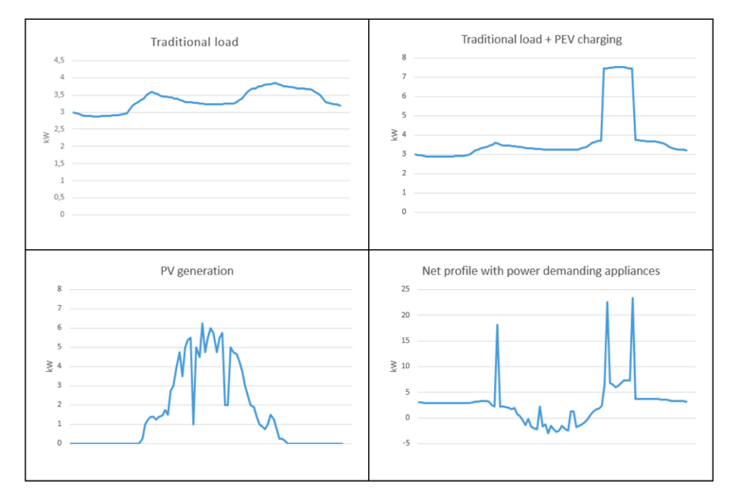
Higher energy consumption levels, renewable energy sources, and new electrical loads, are all conspiring to complicate grid operations and force new grid investments. New demand response opportunities, however, help defer or even reduce the need for reinforcement investments.
To cope with increased energy demands and grid peaks, utilities face massive investments. At home here in Norway, these factors are driving utilities to invest between NOK 150 and 160 billion by 2025, with more than 50 % of these investments planned for distribution grids. Demand response, which involves disconnecting or reducing consumption during peak hours, is a viable alternative to dramatically reducing these costs.
Read also our guide to efficient power grid operations for the digital age.
Why Demand Response?
Energy consumption is predicted to increase radically in the coming years, straining already aging infrastructure. Increasingly, electricity is being generated from solar and wind sources, feeding new and unregulated production into distribution grids. Furthermore, new electrical loads, such as heat pumps and EVs, which require significant power levels for short-time intervals, are becoming common.
These developments are necessary steps towards a cleaner and more sustainable energy supply. For utilities, however, these developments can result in higher costs as peaks exceed local grid capacity. Take a look at how these technologies may impact the load profile of a typical household:
 Source: Stig Ødegaard Ottesen: Techno-economic models in smart grids
Source: Stig Ødegaard Ottesen: Techno-economic models in smart grids
The traditional solution has been grid reinforcement - a familiar but a costly, time-consuming and environmentally invasive solution.
An alternative solution is demand response. By modifying demand-side energy usage through smart technology and consumer engagement, utilities can defer, and in some cases even avoid, capital-intensive reinforcement investments. According to Accenture, targeted reductions in peak load could potentially save a utility millions of dollars in deferred reinforcement costs.
Demand Side Flexibility as an Alternative to Grid Investments
The use of demand response in electricity systems is not a new concept. A perfect match of supply and demand has, after all, always been critical to stable system operations. In its new role, however, demand response leverages consumer flexibility to match supply and demand faster and more efficiently.
One example of this is the Norwegian municipality Hvaler. Following a widespread roll-out of advanced metering infrastructure (AMI), or smart meters, the local utility introduced programs to incentivize customers to adjust their electricity consumption in response to electricity price changes, just by visualizing their consumption data in real-time. You can read more about the project here (in Norwegian).
Another example is the EnergieKoplopers project in Heerhugowaard, Netherlands. With 203 automatically controlled smart appliances, the project utilized a smart energy system to predict electricity supply and demand and regulate them using the smart appliances. Although consumers could gain insight into the system via a user portal, a smart meter, and a smart thermostat, the appliances were automatically controlled without any customer interaction and without any comfort compromise.
We have developed the functionality in smart charging in cooperation with, and delivering to, Smartliv; A company eSmart Systems own together with Ringeriks-Kraft AS. Read more about Smartliv here.
Looking Forward: Non-Wires Alternatives, AI, and Machine Learning
There are also other alternatives to grid reinforcements other than indirect or direct control of consumer appliances. Earlier in 2017, Bonneville Power Administration announced they would take a new approach to managing grid congestion. Instead of relying on new construction to meet changing transmission needs, they are shifting their focus to grid technologies, such as battery storage and flow control devices, to reduce peak congestion and extend operational capacity of the existing system.
Such projects are commonly known as non-wires alternatives. According to Navigant Research, non-wires alternatives are grid investments or projects that use solutions like distributed generation, energy storage, energy efficiency demand response, and grid software and controls, to defer or instead of specific equipment upgrades. As grid management and distributed energy resources (DER) technology have improved, these solutions often better address infrastructure needs at a lower cost with higher customer and environmental benefits.
The digitalization of the power industry, the large-scale deployment of advanced metering infrastructure (AMI, or smart meters), and the increasing number of IoT devices connected to the grid, provide utilities with a wealth of data that can be used for demand response purposes. Moreover, advances in artificial intelligence (AI) and machine learning, provide system operators with new opportunities to predict consumption, production, and pricing, identify substation overloads, and operate consumer-based demand response programs.
The digitalization of the power industry indeed holds great promise for efficient infrastructure operations. This article just scratches the surface. If you are interested in learning more about other opportunities for digital utilities, you can find out more in our e-book “Next Gen Utility Infrastructure Operations: 7 Key Drivers of Change”, available for download below.



.png?width=250&height=64&name=Grid%20Vision%20logo(250%20x%2064%20px).png)